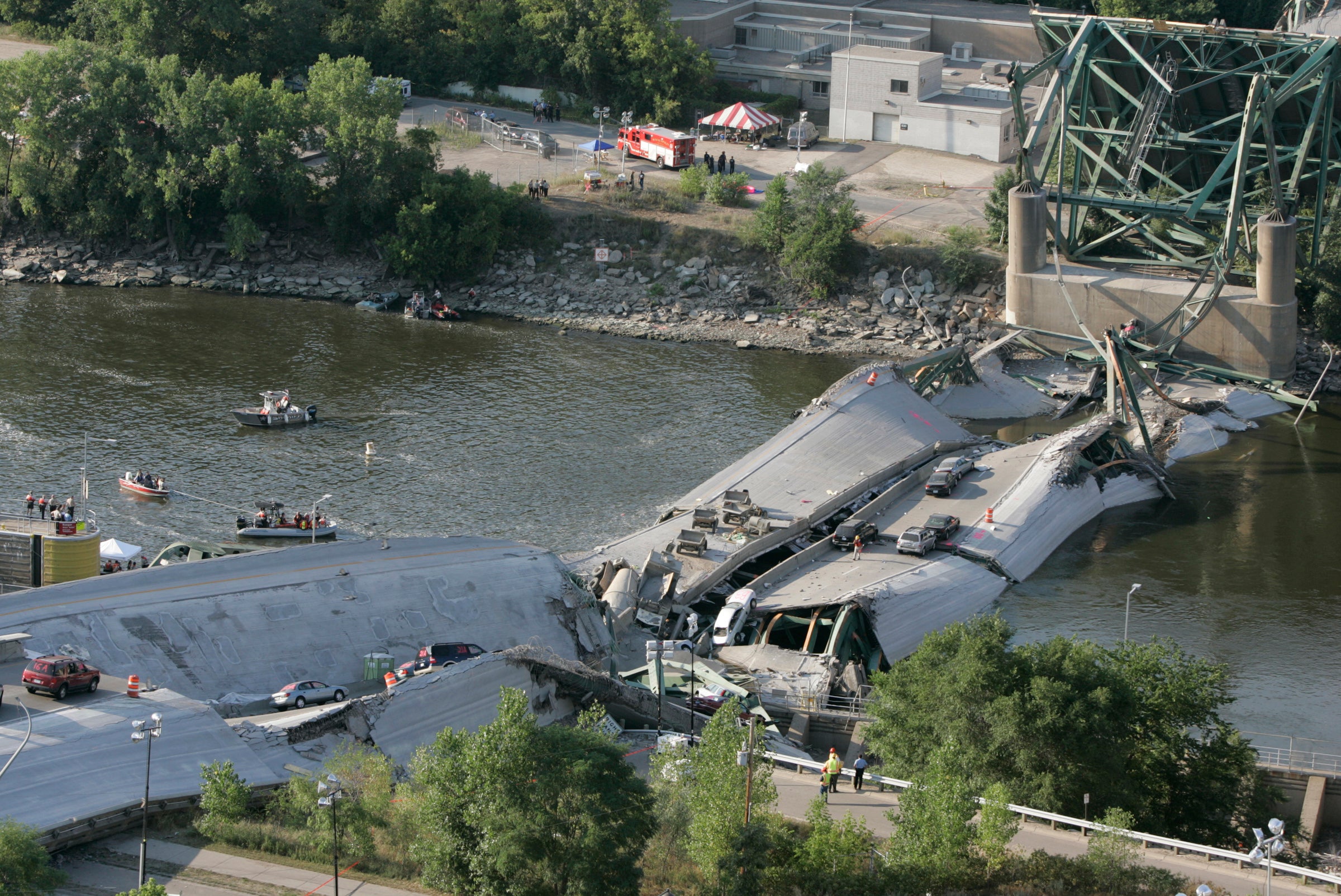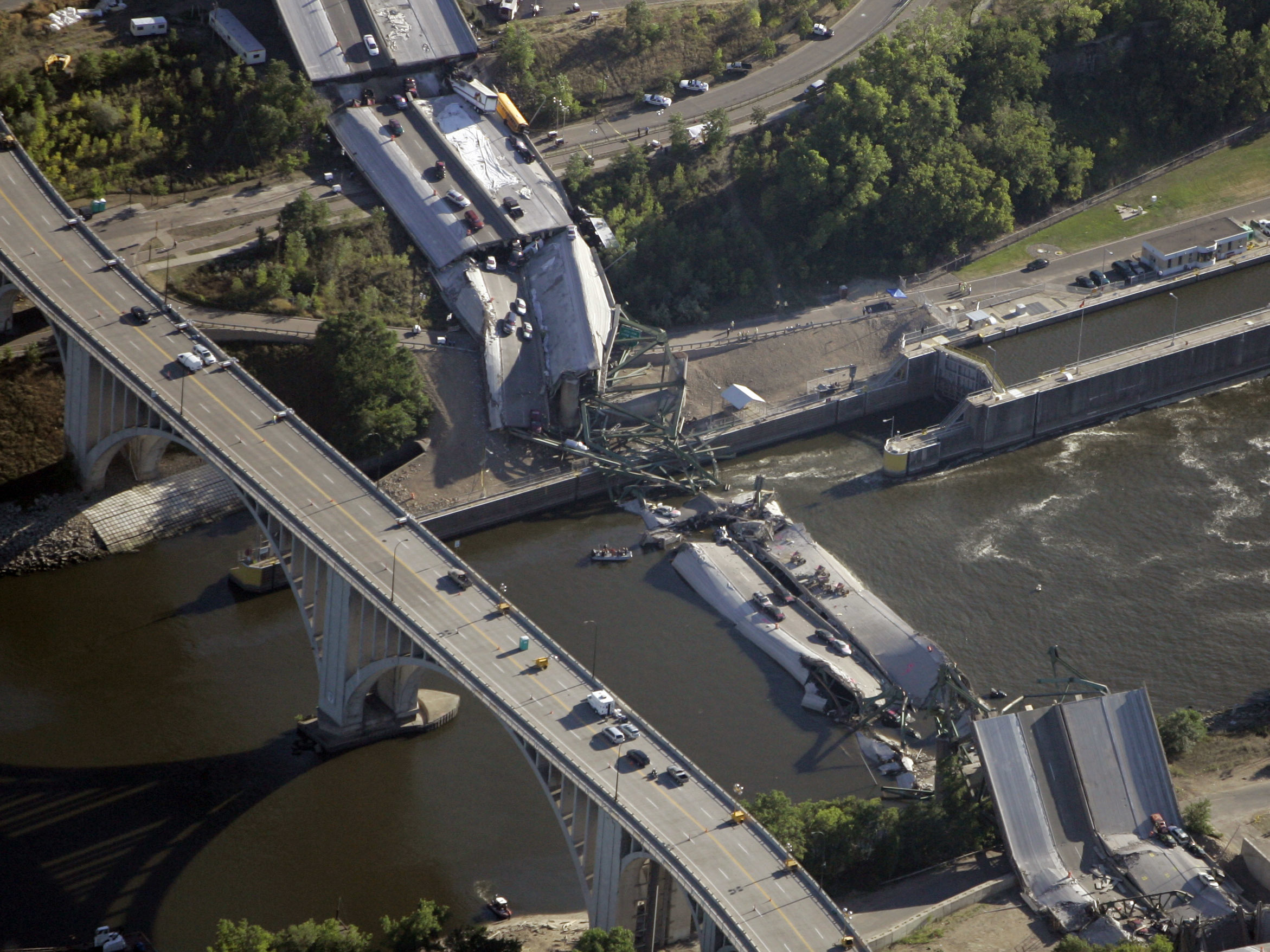Bridge collapses are dramatic events that can have catastrophic consequences, impacting lives, traffic, and economies. They remind us of the engineers’ responsibilities in ensuring public safety. Each collapse tells a story about structural integrity, materials, engineering practices, and maintenance protocols. In this blog post, we will delve into the critical insights shared on Dailymotion regarding bridge failures, aiming to uncover the factors that lead to such catastrophic incidents and the lessons we can learn from them.
Common Causes of Bridge Failures

Understanding the common causes of bridge failures is crucial for improving infrastructure safety and longevity. Several factors can contribute to a bridge’s downfall, and being aware of them can help in prevention efforts. Here are the most frequently cited causes:
- Design Flaws: Poor architectural planning or engineering miscalculations can lead to a bridge's inability to support the intended loads.
- Material Defects: Using substandard materials or incorrect specifications during construction can compromise structural integrity over time.
- Environmental Factors: Natural elements such as floods, earthquakes, and extreme weather conditions can erode the strength of a bridge significantly.
- Neglected Maintenance: Regular inspections and maintenance are essential. Lack thereof can lead to unnoticed wear and degradation that may ultimately cause a failure.
- Overloading: When a bridge carries more weight than it was designed for—whether due to increased traffic or heavy vehicles—it risks structural failure.
- Corrosion: Metal components of bridges can corrode over time when not properly protected, weakening the structure.
These factors highlight the importance of comprehensive planning, ongoing maintenance, and robust safety standards in bridge construction. It's a sobering reminder that every bridge, no matter how sturdy it seems, is susceptible to failure if not properly managed and monitored.
Also Read This: How to Download Videos from Dailymotion
Engineering Principles Behind Bridge Design

Designing a bridge isn’t just about joining two pieces of land; it’s an intricate dance of engineering principles and aesthetics. Every bridge must be crafted to endure forces like weight, wind, and seismic activity. Here are some key engineering principles that form the backbone of bridge design:
- Load Distribution: Bridges are designed to distribute weight evenly across its structure, preventing any single point from bearing too much weight.
- Material Selection: Whether it’s steel, concrete, or composite materials, the choice influences durability, maintenance, and overall safety. Understanding material properties is crucial.
- Structural Integrity: This involves ensuring that the overall structure can withstand bending, compression, and tension forces. Engineers often use finite element analysis to calculate these stresses.
- Aerodynamics: Bridges are susceptible to wind forces. Aerodynamically-designed structures mitigate the risk of oscillations that can lead to catastrophic failures.
- Safety Factors: Engineers incorporate safety factors in their calculations, which act as a buffer against unforeseen events, ensuring the bridge can handle unexpected loads.
- Maintenance Plans: An effective design includes considerations for future inspections and maintenance, allowing for the identification and remedy of wear and tear.
In essence, the success of a bridge largely depends on these principles being executed flawlessly, and thus, a multidisciplinary approach is often employed to incorporate engineering, architecture, and environmental considerations.
Also Read This: Is There a Sound Problem with Dailymotion? Troubleshooting Audio Issues on the Platform
Case Studies of Notable Bridge Collapses
Bridge collapses are not just numbers; they represent the heartbreaking result of engineering shortfalls, oversight, or unforeseeable events. Here are three notable case studies that illustrate the importance of rigorous engineering standards and vigilant maintenance:
| Bridge Name | Year of Collapse | Causes | Consequences |
|---|---|---|---|
| Tacoma Narrows Bridge | 1940 | Wind-induced oscillation (aeroelastic flutter) | Iconic failure; became a case study in aerodynamic design challenges. |
| Silver Bridge | 1967 | Corrosion and a failed eyebar | 46 fatalities; led to changes in bridge inspection regulations. |
| I-35W Mississippi River Bridge | 2007 | Design flaws and inadequate maintenance | 13 fatalities; raised awareness about infrastructure safety. |
Each of these collapses serves as a critical learning point for engineers, emphasizing that safety is paramount. It’s a reminder that a bridge's lifespan is not measured in years alone, but in the continuous diligence of those who design, build, and maintain them.
Also Read This: Exploring Cultural Narratives Through Urdu Stories on Dailymotion
Preventive Measures and Safety Protocols
Bridge collapses can be catastrophic, leading to loss of life, extensive property damage, and significant disruptions. To prevent such disasters, it's crucial to implement a series of effective preventive measures and robust safety protocols. Let's dive into some essential strategies:
- Regular Inspections: Bridges need regular inspections to assess their structural integrity. This can help identify potential weaknesses before they lead to major failures.
- Routine Maintenance: Along with inspections, ensuring that bridges receive routine maintenance like painting, replacing damaged components, and sealing cracks is vital. Neglect can lead to corrosion and structural deterioration.
- Load Management: Understanding and managing vehicular loads is critical. Overloading a bridge can result in stress and eventual collapse. Implementing weight limits and monitoring truck weights helps mitigate these risks.
- Public Awareness Campaigns: Educating drivers and pedestrians about the importance of adhering to posted weight limits and speed restrictions can contribute to overall bridge safety.
- Emergency Response Protocols: Establishing clear emergency response protocols can reduce chaos when incidents occur. This includes training responders and ensuring that communication channels are in place.
By prioritizing these preventive measures and adhering to established safety protocols, engineers and public authorities can significantly minimize the risks associated with bridge construction and maintenance.
Also Read This: How to Make Shawarma at Home in Urdu
The Role of Technology in Bridge Safety
In our rapidly advancing world, technology plays an essential role in enhancing bridge safety. It isn’t just about building sturdy structures; it’s also about monitoring, evaluating, and ensuring their long-term safety. Here are several ways technology is making a difference:
- Advanced Sensors: Modern bridges can be equipped with sensors that monitor stress, vibrations, and movements. These sensors provide real-time data, allowing for immediate addressal of potential issues.
- Structural Health Monitoring (SHM): This technology involves the use of various sensors and analytical tools to assess the health of a bridge continuously. By integrating SHM, engineers can detect anomalies and make data-driven decisions about repairs and maintenance.
- 3D Modeling and Simulation: Engineers now use 3D modeling and simulation software to design bridges. This allows them to visualize how the structure will behave under different loads and conditions, helping to ensure the design is robust and safe.
- Drone Technology: Drones can conduct inspections, especially in hard-to-reach areas. They provide a bird's eye view and can quickly identify issues such as cracks or erosion without putting inspectors at risk.
- Predictive Analytics: Using historical data and machine learning algorithms, predictive analytics can forecast when maintenance or repairs may be necessary, improving proactive measures.
As technology evolves, the ability to ensure bridge safety becomes more sophisticated, ultimately leading to safer travel for everyone. Embracing these innovations is key to protecting lives and infrastructure.
Key Engineering Insights on Bridge Collapse Shared on Dailymotion
Bridge collapses are catastrophic events that can result in significant loss of life, economic damage, and social distress. Recent videos and analysis shared on Dailymotion have highlighted several critical insights into the engineering failures that lead to such disasters.
In analyzing the causes of bridge collapses, several factors are frequently observed:
- Structural Integrity: Poor maintenance and the deterioration of materials contribute significantly to structural failures.
- Design Flaws: Engineering oversights during the design phase can lead to vulnerabilities that may not be immediately apparent.
- Load Analysis: Inaccurate assessments of load-bearing requirements often exacerbate stress on bridge components.
- Environmental Factors: Natural disasters such as floods and earthquakes can test the limits of bridge design and materials.
The Dailymotion analysis includes various case studies that detail the circumstances and engineering failings associated with significant bridge collapses. Some notable examples discussed are:
| Bridge Name | Year of Collapse | Key Factors |
|---|---|---|
| Tacoma Narrows Bridge | 1940 | Aerodynamic instability |
| I-35W Mississippi River Bridge | 2007 | Design flaws and fatigue |
| Morandi Bridge | 2018 | Corrosion and maintenance neglect |
These cases exemplify the complex interplay of engineering principles and external forces. It is crucial for the future of bridge engineering to embrace better design protocols, regular maintenance schedules, and advanced stress-testing methodologies to prevent similar tragedies.
Conclusion: By synthesizing insights from engineering failures, the discipline can evolve towards more resilient and reliable bridge infrastructure, ultimately mitigating the risk of future collapses.
 admin
admin








